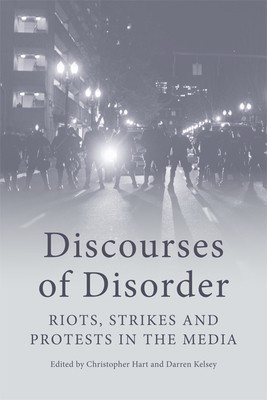
- We will send in 10–14 business days.
- Publisher: Edinburgh University Press
- ISBN-10: 1474435416
- ISBN-13: 9781474435413
- Format: 16 x 23.9 x 1.8 cm, hardcover
- Language: English
- SAVE -10% with code: EXTRA
Discourses of Disorder (e-book) (used book) | bookbook.eu
Reviews
Description
10 chapters each addressing representations of riots, strikes and protests in a different national, historical and political context. Includes detailed case studies cutting across time, communicative mode and genre, and geo-political context. Analysis extends beyond linguistic representation to include imagery in the form of photographs, videos and political cartoonsRiots, strikes and protests are heavily mediatised events. Media representations thus play a crucial role in narrating instances of civil disorder for the public where they define the issues at stake, delimit frames of reference and debate, and ultimately legitimise or delegitimise the actors, actions and causes involved. From a critical semiotic perspective, drawing on insights from linguistics, multimodality and media studies, this book explores the ideological dimensions of media representation and its function in discursively constructing public understandings of, and attitudes toward, civil disorder. A range of
case studies are pres
EXTRA 10 % discount with code: EXTRA
The promotion ends in 5d.07:40:50
The discount code is valid when purchasing from 10 €. Discounts do not stack.
- Publisher: Edinburgh University Press
- ISBN-10: 1474435416
- ISBN-13: 9781474435413
- Format: 16 x 23.9 x 1.8 cm, hardcover
- Language: English English
10 chapters each addressing representations of riots, strikes and protests in a different national, historical and political context. Includes detailed case studies cutting across time, communicative mode and genre, and geo-political context. Analysis extends beyond linguistic representation to include imagery in the form of photographs, videos and political cartoonsRiots, strikes and protests are heavily mediatised events. Media representations thus play a crucial role in narrating instances of civil disorder for the public where they define the issues at stake, delimit frames of reference and debate, and ultimately legitimise or delegitimise the actors, actions and causes involved. From a critical semiotic perspective, drawing on insights from linguistics, multimodality and media studies, this book explores the ideological dimensions of media representation and its function in discursively constructing public understandings of, and attitudes toward, civil disorder. A range of
case studies are pres


Reviews